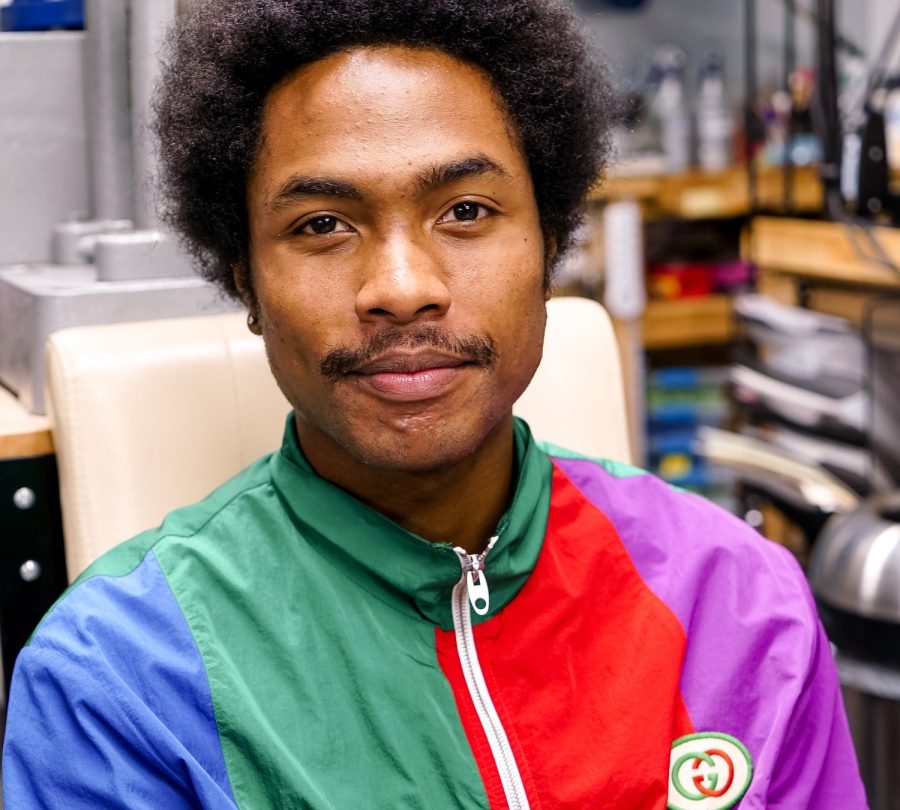Opinion: How social media ruins your favorite artists
Virality and trendiness spoils the music and fashion spaces
Steve Lacy at Icebox Diamonds & Watches in 2019. Since then, Lacy has exploded in popularity, topping the Billboard Hot 100 charts this year with the release of his single “Bad Habit.” Photo courtesy of Moyopoyo/Flickr
Panda SB Nike Dunks, Blazers, bootcut jeans, Steve Lacy inspired playlists, graphic band tees, ironic t-shirts and more are on the rise with Gen Z gravitating towards and embracing more trendy forms of expression. This leads to them becoming the ironic punchline of their own joke: all having the same fashion, music and interests while decrying those who disagree, question or push the boundaries of these art forms.
While a shared opinion or favoritism toward a subculture is completely fine and rather normal, the danger and hypocrisy is expressed by those who are simply unaware of the general popularity of these trends. Yet where do these trends originate and popularize themselves so much so that those “alternative” items are suddenly the norm?
The rise of TikTok, Instagram and other big social media platforms continue to play the main role in pushing out these narratives and trends. These platforms have made fashion more accessible than ever through the power of algorithms, especially when one plays into their target demographic and what’s “in.” While this is seemingly a non-issue and rather the most efficient way as a creator to gain traction, it has also led to this culture of “alternative taste” while being just the opposite.
Furthermore, this leads to gatekeeping, regression and an overall decline in new and true counterculture and “alternative” movements that push against these conventional tastes in popular culture.
This described notion can be found through two avenues of taste: music and fashion, with more being present, but these two are by far the most apparent and exemplified cases. Trends like fast-fashion have always been within the cultural zeitgeist of younger consumers. However with the rise of TikTok and social media in general, platforming problematic styles and brands to be holier than thou has become a common occurrence.
Take modern day fashion trends among Gen Z: graphic band tees, relaxed fit jeans, ‘80s style shoes and skate aesthetics have been pushed to the forefront of what is perceived to be “tasteful” dressing. Really, taste is all in the eye of a beholder. The issue is the level of arrogance and lack of self-awareness by influencers who use these trends to show how “unique” they are, meanwhile, they all dress the same.
A rising trend that has popped up post-pandemic is this more formal “adult” style of clothing with accents of more casual streetwear inspired pieces. This is seen through the rise to stardom of brands like Aime Leon Dore and the resurgence of shoes like the Adidas Samba Classic and the Nike SB Dunk. While many find these pieces to be an upper tier in fashion compared to that of brands like H&M and Forever 21, they are merely a different side of the same coin.
On the other hand, music has had a similar issue but is perceived differently for one main reason. With many posts on YouTube, Instagram and TikTok such as, “ten underrated songs,” “songs you need in your playlist,” “underrated music” and more have blown up. Artists like Steve Lacy, Tyler the Creator, Frank Ocean, Mac Miller and others who inhabit this area of music have all benefited from this trend. This has led to much of Gen Z having the same music taste and interest, which by itself is completely fine. However, this generation has also seen themselves as more than others in comparison because of their taste. This is the main issue; a lack of self-awareness has become apparent in a whole culture and audience of music. While yes, music is harmless, it becomes pretentious and deters new listeners and “normal” people from simply enjoying what they want.
In the music industry not all of this is negative, mainly due to one thing: exposure to independent artists. Gen Z gravitates toward more artsy and “alternative” music, their favorite artists tend to be those without a label, and more self-sufficiency as an artist and social media has offered unprecedented marketability to independent artists.
However, with how predatory the music industry is with streaming deals, label records, rights to masters, etc., this exposure and general fanaticism by a whole generation has made these artists blow up. Take Steve Lacy for example, someone who makes most of his music on the app GarageBand, an artist who had not had a charting hit until this year. With the song, “Bad Habit,” Lacy garnered a Billboard #1 hit and is now being played on the radio, streaming service playlists, ads and more.
“Bad Habit” is a small diamond in the rough of this toxic culture being established within these circles. That to an extent, one can make it past mere social media virality into legitimate spaces. The downside is seeing packed shows go silent and fans disrespectfully throw their phones at the artist. It feels that in the social media era, fans have been displaying more often an inability to give the artists appropriate treatment.
Finally, while many detest how pretentious and unaware many of these people propagate these trends to their own blind following of trends, in reality this is not really harmful. For the most part, this is not really dangerous rhetoric or actions taken place, moreover this is just a toxic byproduct of social media and a generation fully born into the short attention span that these trends and platforms feed off of.



